Click on images to enlarge
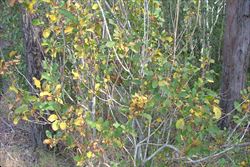
habit in autumn (Photo: Sheldon Navie)
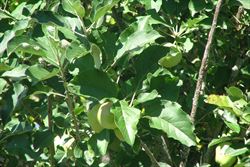
habit in summer (Photo: Sheldon Navie)
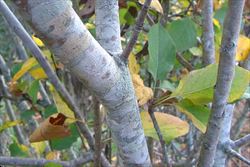
greyish bark on main stem (Photo: Sheldon Navie)
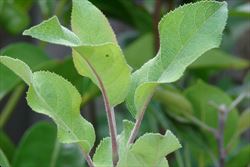
young leaves in spring (Photo: Forest and Kim Starr, USGS)
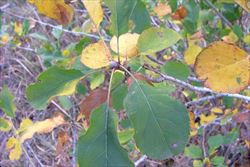
older leaves in autumn (Photo: Sheldon Navie)
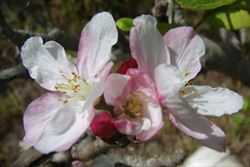
close-up of flowers (Photo: Forest and Kim Starr, USGS)
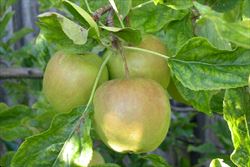
immature fruit (Photo: Greg Jordan)
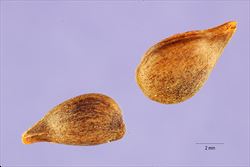
close-up of seeds (Photo: Tracey Slotta at USDA PLANTS Database)
Scientific Name
Malus pumila Mill.
Synonyms
Malus domestica Borkh.Malus x domestica Borkh.Malus sylvestris (L.) Mill. (misapplied)Pyrus malus L.
Family
Malaceae (New South Wales)Rosaceae (Queensland, the ACT, Victoria, Tasmania, South Australia and Western Australia)
Common Names
apple, crab apple, crabapple, domestic apple, paradise apple
Origin
Native to central and eastern Europe (i.e. Austria, Hungary, Albania, Bulgaria, Greece, Romania and Yugoslavia).
Naturalised Distribution
Naturalised in many parts of south-eastern and eastern Australia (i.e. in south-eastern Queensland, eastern New South Wales, the ACT, Victoria, Tasmania and southern South Australia).
Also widely naturalised in other parts of the world, including in the USA.
Notes
Apple (Malus pumila) is regarded as an environmental weed in Victoria, the ACT and some parts of New South Wales. This fruit tree is widely cultivated in orchards and gardens in the wetter temperate regions of Australia. It has escaped cultivation and invaded roadsides, riparian areas and bushland in these same regions.
Apple (Malus pumila) is most commonly naturalised in southern Victoria, and is listed as an environmental weed in several local authority areas within this region (e.g. in Knox City, Cardinia Shire, Colac Otway Shire and the Shire of Yarra Ranges). It is also regarded as an environmental weed in the Goulburn Mulwaree area in southern New South Wales, has been recorded in the Don River Reserve in Tasmania, and is becoming naturalised in the higher rainfall areas of South Australia.

